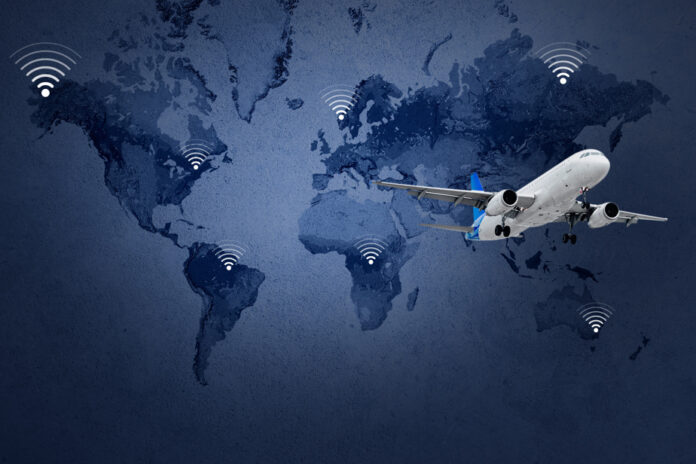Rather ruinous two decades ago, the roaming packages offered by providers have mellowed somewhat over time. Essentially, in the most common formula, the user keeps the cellular plan he uses in Quebec or Canada, but it applies to the United States and internationally. If, for example, you had a limit of 10 GB of unlimited data, calls and texts here, you will have the same limit abroad, subject to a daily surcharge. A phone call, a visit to the website or the application is enough.
Frequent traveler, Steve Marcotte, director of the Voyages Terre et Monde agency, prefers this option. “I take it all the time. I love it, I did it for several cities in Europe. Many travelers do not want to break their heads. »
Canadian providers offer two rates: one for the United States and one for the vast majority of the rest of the world. Certain destinations, including Angola, Libya, Zimbabwe and Turkmenistan, are not eligible; calls are then billed on a pay-per-use basis. They can for example reach, for Angola, the staggering sums of $4 per minute and $16 per MB.
The “roaming” plan activates for a full day as soon as the phone tries to connect to a cellular network abroad. Incoming calls from Canada are part of the package, as are outgoing calls in the country visited or to Canada. Elsewhere, they are billed on a per-use basis.
Caution here: La Presse has received numerous testimonials from readers and colleagues who have been charged for a day’s roaming even though their phone was put on airplane mode or roaming was disabled. They then had to demonstrate to their supplier that they had not used the service, which can be complex. “The trick is to put yourself in airplane mode before you leave and deactivate or remove your SIM card altogether,” says Nadir Marcos, CEO of PlanHub, a comparison of cellular and internet plans.
This is the trick of seasoned travelers and the most economical. We buy on site, at the airport, in a shop or online a prepaid package with a SIM card, which provides a local number. Interestingly, many providers, especially for Europe and the United States, offer online, especially on Amazon, the possibility of activating the SIM card before departure on the trip. This gives you confirmation of the new phone number that you can send to your contacts.
Whether on site or online, this formula allows you to obtain cellular plans – data, voice and text messages – at unbeatable prices.
The problem with buying a prepaid plan abroad is that it is sometimes very difficult to obtain from Canada a complete portrait of the offer in the country in which you are going. Some packages, moreover, can only be activated once there. Providers sometimes also refuse to register subscribers outside the country. Be careful, many plans offered online only include data, with the inconvenience that this can cause if the communication applications are not familiar to us.
And another precaution: some providers, especially in Europe, include a personal identification number (PIN) to activate the SIM card. Keep it. Your phone may no longer access the network if you restart it.
Here are some offers that La Presse was able to glean abroad. For a stay of more than a few days, they are much more advantageous financially than the roaming packages offered by the providers.
This is the new trend, which often goes hand in hand online with eSIM card offers. The advantage of these eSIMs is obviously that there is no physical sending of a card, activation can be done directly online.
Note, however, that there are data plans only with good old physical SIM cards.
Holafly.com is one of the most present providers in the world with this formula. For example, you can enjoy unlimited data for 15 days for $59 in dozens of countries. Its North American offer of 6GB in 15 days for $74 isn’t quite as good, however.
Since the beginning of June, the Montreal site PlanHub has put online a new comparator of data plans with eSIM, Simbud.com. The choice is still limited to four suppliers, but its CEO promises twenty more by the fall. You can find everything there, from a 7-day plan in the United States with 1 GB for $5.35 to a 30-day plan, 3 GB in Afghanistan for $21.42, including 7 days in France, 1 GB for 7, $36.
These packages, remember, only include data. You therefore do not have a personal telephone number that your interlocutors can dial directly. Text messages are also not possible. Your phone actually behaves as if it’s just plugged into a WiFi network somewhere in the world.
These limitations, says Nadir Marcos of PlanHub, are easy to work around for anyone who has at least some command of communication platforms. “Whether it’s Messenger, WhatsApp or FaceTime, almost everyone has a second way to communicate,” he says.
When you want to keep your phone number this way, you can ask your interlocutor to dial it in WhatsApp. “In Mexico, in the Dominican Republic, everyone is on WhatsApp,” notes Steve Marcotte. To call someone on a “classic” phone number on their cellular network, platforms such as Skype or Fongo allow connection at little cost.
This is the limit, since 2013, of data overage charges that a Canadian traveling abroad can pay, per monthly cycle. But it does not apply to voice service and texting, for which you can still receive surprise bills. The only difference, since 2013, is that the provider must notify the account holder and the user of the device, and clearly indicate what the charges are associated with voice and text messaging services.















